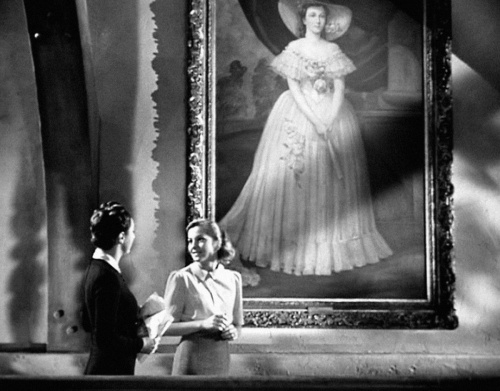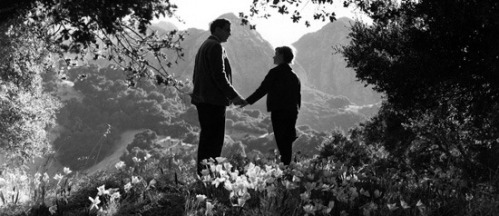
As the Academy entered a new decade, several changes came to the Awards. For the first time ever, the winners were kept a complete secret until the envelopes were opened on stage. The first year, the winners were known in advance. But to heighten suspense, the Academy decided that for future shows, the names of the winners would be given to the press on the condition that they would not release the names until after the ceremony. This agreement held until 1939, when the Los Angeles Times printed the winners in their evening edition on the night of the awards thereby “spoiling the surprise.” The decision was made to maintain absolute secrecy regarding the winners, and accounting firm Price Waterhouse & Co. was hired to count the ballots and place the winners’ names in sealed envelopes. There were also numerous name changes for the Best Picture category. The original “Outstanding Picture” lasted for the first two ceremonies before becoming “Outstanding Production” in 1930, a change that held until 1941 when the Academy renamed the prize “Outstanding Motion Picture.” This only lasted for three years before the Academy decided on “Best Motion Picture,” before finally becoming the current “Best Picture” in 1963.
This transition from “production” to “picture” may have been a result in a shift in creative power that was beginning to happen. In the earliest days of film, the medium belonged to cinematographers or—to borrow the title from Dziga Vertov’s 1929 documentary—men with movie cameras. But by the time film was a business, it had become a producer’s medium. The top award was—and still is—given to the producer(s) of a film. However, in 1940 a trend began that raised questions about who the real creative genius behind any given film was: the producer or the director. Obviously, directors had been acknowledged from the inception of the awards, but they were often seen—at least by the production companies—as interchangeable commodities. That way of thinking was about to change.

In 1939, British film director Alfred Hitchcock arrived in Hollywood to direct his first American feature film, Rebecca. Working with producer David O. Selznick proved to be a challenge, as Hitchcock was not used to having anyone question his decisions. Selznick was not used to having anyone question him, period. Coming off his win for Gone with the Wind, Selznick felt he knew better than his new, young director what made a great film. But the forty-year-old Hitchcock had already directly twenty-four feature films as well as various shorts and knew a few tricks of his own. At one point, Selznick considered cancelling the project until his wife, Irene, viewed some of the footage and told him it was one of the best films he had ever produced. Irene was right. Rebecca was the first film directed by Hitchcock to be nominated for best picture and the only one to win. It also gave Hitchcock his first of five Best Director nominations (he didn’t win for Rebecca or Lifeboat [1945], Spellbound [1946], Rear Window [1955], or Psycho [1961]).
The clash between Hitchcock and Selznick spoke to a problem that was happening in Hollywood in general. Producers wanted to maintain absolute creative control over their “productions,” while directors wanted more freedom to develop their own personalized style. And Hitchcock had style. He also knew that if his style was going to be seen, he had to outwit Selznick and make the film on his own terms. He would edit “in-camera,” meaning that he knew what shots he wanted and shot nothing else. This was not standard practice at the time, and it meant that if Selznick wanted to recut the film, he would have no additional footage with which to work. Essentially, Hitchcock was creating the first “director’s cut” of a film. Other problems included clashes in the two men’s attitude towards their respective positions. Hitchcock thought that Selznick was trying to direct rather than produce by telling Hitchcock how to handle the actors, and Selznick thought that Hitchcock wasted too much time setting up shots before rehearsing rather than rehearsing while the shot was being set up by the cinematographer. Hitchcock believed the latter was too noisy and distracting, so he would painstakingly work out the shot with cinematographer George Barnes, direct the placing of lights and other equipment, and then bring his actors (Laurence Olivier and Joan Fontaine in brilliant performances) onto the quiet set to rehearse before shooting the scene. This process resulted in the film going twenty-seven days over its production schedule. It also resulted in the first classic Hitchcock film. Though Rebecca is not as lauded as the master’s later features, the film does showcase Hitchcock’s aesthetic in terms of the sweeping cinematography, painstaking attention to mise-en-scène, psychological character development, and brilliant understated acting performances, particularly from Judith Anderson as Mrs. Danvers, the cold and calculating housekeeper of Manderley. For all of Hitchcock’s brilliance, he lost best director to John Ford for The Grapes of Wrath.

1941 saw the rise of the director continue as John Ford won best director for How Green Was My Valley, also that year’s best picture. This was not only Ford’s second win in a row, but his third overall. More importantly, Ford again beat Hitchcock, who was not even nominated for that year’s Suspicion even though Hitchcock did receive a best picture nomination as the film’s producer. If knocking out Hitchcock for a second time weren’t enough, Ford also beat Howard Hawks and future three-time winner William Wyler. Newcomer John Huston won for best adapted screenplay but wasn’t even nominated as director for his debut film, The Maltese Falcon. But all of this trivia is overshadowed as Ford’s How Green Was My Valley will be forever remembered as the movie (and the man) that beat Orson Welles’s Citizen Kane. It’s an unfair reputation. To quote TV’s Frasier Crane, “It is a beautifully acted depiction of life in a small town in Wales. It won five Academy Awards! It’s a classic!” This quote comes from an episode of the popular sitcom and was, in many ways, part of the recurring theme of how “out of touch” Frasier is with the “average” person. He goes to a video store looking for an obscure title that most stores wouldn’t carry. But the film is a classic. It is, after all, the film that beat Citizen Kane. Kane was praised and honored with nine nominations, including four for Welles as producer, director, actor, and screenwriter (the latter being his only win, an honor he shared with co-writer Herman J. Mankiewicz). For all of the praise heaped on Welles’s film in retrospect, Kane was truly ahead of its time. It was different.
How Green Was My Valley, on the other hand, represents Ford and Hollywood at its commercial and artistic height. While Kane focused on the rise and fall of a wealthy newspaper tycoon and played with the cinematic form in terms of cinematography and narrative structure, Valley focused on a family in the coal-mining hills of Wales in the late nineteenth century. The world was at war for the second time in the century and Valley focused on real people and how life, no matter how much we don’t want it to, changes. Kane is remembered, rightly, for how its story is told but, in the end, we don’t like the titular character very much and most viewers believe he deserves the life he gets. The Morgans of Valley, on the other hand, are hard-working, good people who must learn to cope with layoffs, love, loss, death, and a new world as the youngest son, Huw (played beautifully by a thirteen-year-old Roddy McDowall), is to be educated rather than live the life of a coal miner like his father and brothers before him.The film shows that in times of trouble not only do families come together but entire communities.
Supposedly rentals, sales, and television screenings of How Green Was My Valley increased after the Frasier episode aired. This “fact” may be apocryphal, but the film should be viewed and deserves to be remembered as a movie that tried to capture a simpler time that was transitioning to a much darker, modern world as the next few best picture winners would show.
[Note: It’s been a while since I’ve posted, but I’ve been a little busy with other projects. I have kept watching the winners, I just haven’t found much time to write about them. So, expect lots of updates coming soon!]